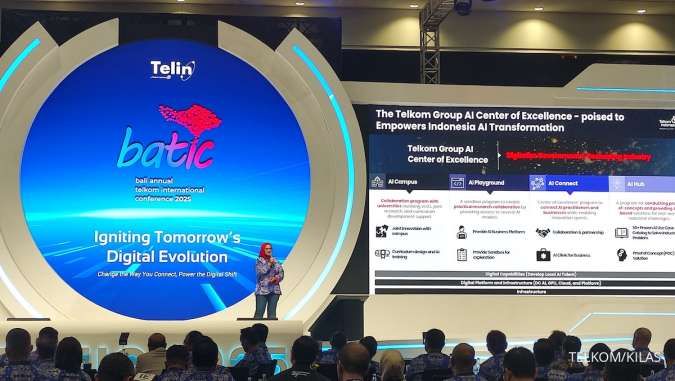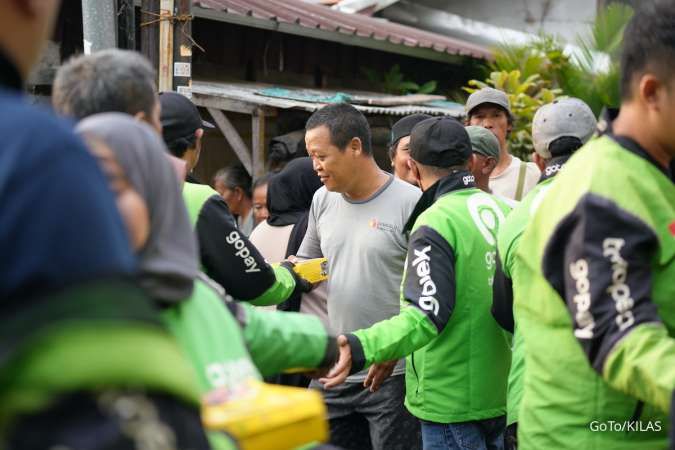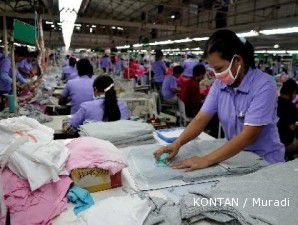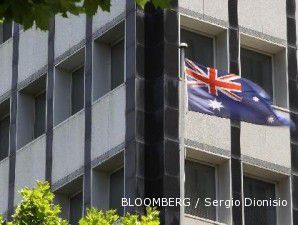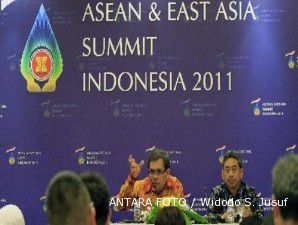Members of the Association of Southeast Asia Nations (ASEAN) along with six partners have agreed to commence first-round talks next year on a regional free-trade partnership, which will form the world’s largest economic bloc by 2015.The new partnership, dubbed the Regional Comprehensive Economic Partnership (RCEP) or “ASEAN+6” trade pact, will create a 16-country integrated market in the Asia-Pacific region with a population of over 3 billion and a combined gross domestic product (GDP) of US$17.23 trillion.It will comprise six countries from outside ASEAN — Australia, China, India, Japan, South Korea and New Zealand — that have already signed separate free trade agreements (FTAs) with ASEAN.Economic ministers of the 16 countries would submit the key recommendations for approval to ASEAN-related summits in November in Phnom Penh, Cambodia, the Trade Ministry’s director general for international trade cooperation, Iman Pambagyo said.“Every country has shown a strong willingness to realize the initiative next year,” he told The Jakarta Post in an email over the weekend.To facilitate the process, ASEAN members and the FTA partners have already set up three working groups on trade in goods, services and investment.The working group on trade in goods was the most advanced of the three; it had met for three rounds of talks with the six FTA partners, Iman said, adding that the other two groups had only had one meeting involving only ASEAN members.“So far, discussions on trade in goods has made points of convergence,” he said.The working group on trade in services would meet this month to consolidate their positions before meeting FTA partners later this year, Iman added.The RCEP, endorsed by leaders at the 19th ASEAN Summit in Bali in November last year, aims to create a partnership agreement that embraces deeper engagement than existing FTAs, resulting in smoother flows of trade and investment within the region.As it is based on open accession, the partnership will allow any of the six FTA partners to take part, either from the start or later when they are ready to join in. It will also accommodate the interests of other economic partners to create an open regionalism.The RCEP is also seen as a tool to further maintain ASEAN’s centrality, which has recently been challenged by several regional trade agreements, such as the Trans-Pacific Partnership (TPP), that do not include all ASEAN members.The American-led TPP was launched during the Honolulu Asia Pacific Economic Cooperation (APEC) summit last year by US President Barack Obama and leaders of nine Asia-Pacific countries.TPP is designed to be a “beyond ordinary free trade deal” covering areas commonly excluded by other trade agreements, such as government procurement, and promoting higher labor, environmental and intellectual property standards, with which developing countries may find difficulties complying. The Jakarta Post
ASEAN+6 slated to begin FTA talks next year
Members of the Association of Southeast Asia Nations (ASEAN) along with six partners have agreed to commence first-round talks next year on a regional free-trade partnership, which will form the world’s largest economic bloc by 2015.The new partnership, dubbed the Regional Comprehensive Economic Partnership (RCEP) or “ASEAN+6” trade pact, will create a 16-country integrated market in the Asia-Pacific region with a population of over 3 billion and a combined gross domestic product (GDP) of US$17.23 trillion.It will comprise six countries from outside ASEAN — Australia, China, India, Japan, South Korea and New Zealand — that have already signed separate free trade agreements (FTAs) with ASEAN.Economic ministers of the 16 countries would submit the key recommendations for approval to ASEAN-related summits in November in Phnom Penh, Cambodia, the Trade Ministry’s director general for international trade cooperation, Iman Pambagyo said.“Every country has shown a strong willingness to realize the initiative next year,” he told The Jakarta Post in an email over the weekend.To facilitate the process, ASEAN members and the FTA partners have already set up three working groups on trade in goods, services and investment.The working group on trade in goods was the most advanced of the three; it had met for three rounds of talks with the six FTA partners, Iman said, adding that the other two groups had only had one meeting involving only ASEAN members.“So far, discussions on trade in goods has made points of convergence,” he said.The working group on trade in services would meet this month to consolidate their positions before meeting FTA partners later this year, Iman added.The RCEP, endorsed by leaders at the 19th ASEAN Summit in Bali in November last year, aims to create a partnership agreement that embraces deeper engagement than existing FTAs, resulting in smoother flows of trade and investment within the region.As it is based on open accession, the partnership will allow any of the six FTA partners to take part, either from the start or later when they are ready to join in. It will also accommodate the interests of other economic partners to create an open regionalism.The RCEP is also seen as a tool to further maintain ASEAN’s centrality, which has recently been challenged by several regional trade agreements, such as the Trans-Pacific Partnership (TPP), that do not include all ASEAN members.The American-led TPP was launched during the Honolulu Asia Pacific Economic Cooperation (APEC) summit last year by US President Barack Obama and leaders of nine Asia-Pacific countries.TPP is designed to be a “beyond ordinary free trade deal” covering areas commonly excluded by other trade agreements, such as government procurement, and promoting higher labor, environmental and intellectual property standards, with which developing countries may find difficulties complying. The Jakarta Post
